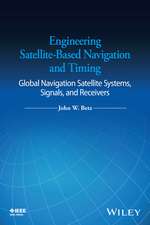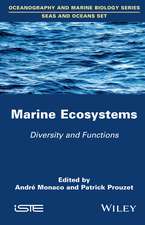The Dawn of Animal Life: A Biohistorical Study: Cambridge Earth Science Series
Autor Martin F. Glaessneren Limba Engleză Paperback – 19 iun 1985
Preț: 360.05 lei
Nou
Puncte Express: 540
Preț estimativ în valută:
68.90€ • 71.85$ • 57.27£
68.90€ • 71.85$ • 57.27£
Carte tipărită la comandă
Livrare economică 20 martie-03 aprilie
Preluare comenzi: 021 569.72.76
Specificații
ISBN-13: 9780521312165
ISBN-10: 0521312167
Pagini: 258
Dimensiuni: 152 x 229 x 14 mm
Greutate: 0.38 kg
Ediția:Revised
Editura: Cambridge University Press
Colecția Cambridge University Press
Seria Cambridge Earth Science Series
Locul publicării:Cambridge, United Kingdom
ISBN-10: 0521312167
Pagini: 258
Dimensiuni: 152 x 229 x 14 mm
Greutate: 0.38 kg
Ediția:Revised
Editura: Cambridge University Press
Colecția Cambridge University Press
Seria Cambridge Earth Science Series
Locul publicării:Cambridge, United Kingdom
Cuprins
List of figures and tables; Preface; 1. Precambrian life and its environment: a review: i. Theories about the origin of life and its environment; ii. The Precambrian, its subdivisions, and the dating of biohistoric events; iii. The preservation and recognition of organic remains in rocks: chemofossils, fossil organisms, pseudofossils; iv. The cell: organization and life processes. The 'kingdoms' of organisms; v. Proterozoic fossils and environments; vi. Origins and early differentiation of the Metazoa; 2. The Ediacarian faunal assemblages: discovery, composition, significance; i. Discoveries at Ediacara; ii. Palaeoenvironment and fossilization; iii. Composition of the fauna; iv. Paleobiology; v. Other occurrences of Late Precambrian Metazoa in Australia; vi. The Nama fauna of southwestern Africa (Namibia) and possible equivalents in South America; vii. Late Precambrian Metazoa from the Northern Hemisphere; viii. The concept of Ediacarian fauna; 3. The Precambrian diversification of the Metazoa in the light of paleozoology: i. The significance of the Ediacarian fauna for metazoan phylogeny; ii. Re-assessment of the incompleteness of the palaeontological record; iii. The record of the Late Precambrian fauna applied to problems of phylogeny; iv. Occupation of the marine environment: habitats and habits; v. Conclusions on the physical environments of the Late Precambrian Metazoa; vi. The taxonomy of emerging diversity: the meaning of phyla; vii. Rates of evolution; 4. The Precambrian-Cambrian transition: i. Stratigraphic scales: boundaries and historical transitions; ii. The fate of the Ediacarian faunas: extinction, survival, replacement; iii. The Cambrian Period as the time of the first shelly fossils; iv. the oldest Cambrian faunas and their evolutionary antecedents; v. Agglutinated, chitinous and mineralized body components in Ediacarian fossils and in some successors; vi. Extrinsic and internal factors of biomineralisation and its functional significance; vii. Environmental changes at the Precambrian-Cambrian transition; viii. Increase in diversity of trace fossils; ix. Consequences and causes of evolutionary diversification; 5. Emerging animal life: thoughts on interactions of lithosphere, hydrosphere, atmosphere and biosphere: i. Interactions of intrinsic and environmental factors in the emergent biosphere; ii. Metazoan expansion in the marine biosphere: a three-stage process; iii. Interactions in the light of plate tectonics; iv. Animal life: past, present and future; Appendix; References; Dictionaries of scientific terms; Author index; Subject index.
Descriere
This 1985 book examines the origin of the present diversity of marine invertebrate animals.



























